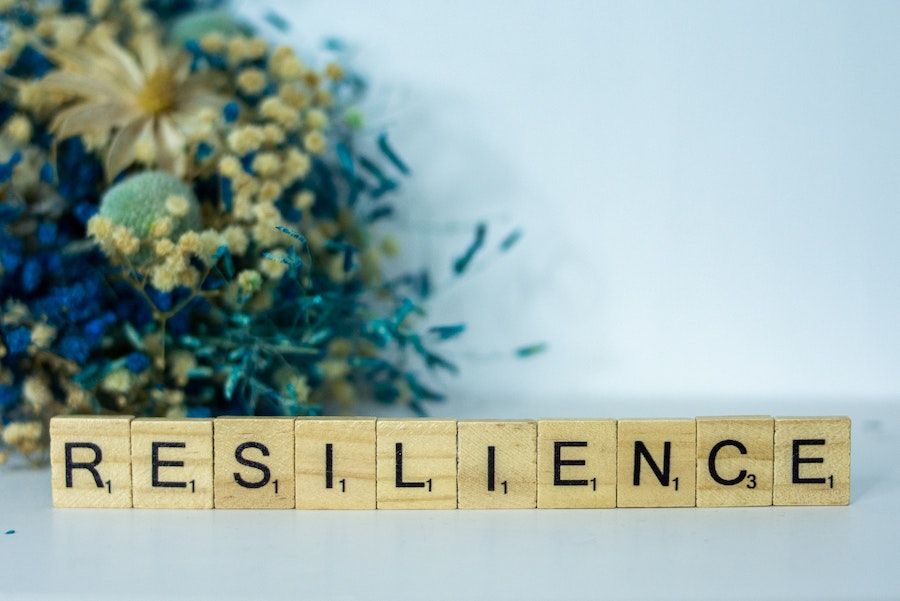This article is taken from a presentation Kirill Makharinsky gave at Future of SaaS Festival 2022. Get the full unedited talk on demand, right here.
In this article, I’m going to share some stories from my fundraising career that I've never shared anywhere else. Each story comes with a lesson I learned along the way. Hopefully, these lessons will help you as you embark on your journey to raise capital.
A little bit of background before we get started: I've co-founded companies that have over $200 million in net revenue.
I’ve raised over $100 million from investors like Founders Fund, General Catalyst, and Accel. I also spent about eight years angel investing, during which time I was an early investor in companies like Angel investor, List, Calm, and many more.
Main talking points include:
- Fundraising: it’s not magic
- The power of SaaS metrics
- When doubt sets in
- Raising $13m pre-product
- When we got capital with negative dilution
- When you’re rejected… many times
Fundraising: it's not magic
I want to start by dispelling the myth that fundraising is some kind of magic black box. It's a simple process. There are six key steps to fundraising; all you have to do is keep practicing each one. Let's look at the six steps.
Step one: figure out your story. What does the product or service you’re building have to offer? Why would a potential investor be interested? You have to figure this out before you can go anywhere.
Step two: find the right investors – more on this later.
Step three: pitch again and again. Unless you’re incredibly lucky, pitching is probably going to be a long and arduous process. It may take months or even years.
Step four: agree on reasonable terms. Once you’ve got someone interested in investing in you or your company, it’s time to set a deal that works for both of you.
Step five: get the money in the bank. This step doesn’t need much explanation.
Step six: get back to work!
That’s it. There’s no magic, alchemy, or witchcraft. The folks who are good at fundraising and finding investors are just nailing each of these steps and getting better with practice.
The power of SaaS metrics
We need to talk about metrics. Improving your business is the most effective way to get investors excited. You can demonstrate improvement with metrics.
The great thing about SaaS is there are loads of metrics you can leverage to measure and present the health of your business. Even early on, when you have a limited number of customers, it's pretty much algorithmic.
Keep in mind that the top investors will have a crystal-clear view of how a business like yours should be performing metrics-wise at every stage.
Now, let’s delve deeper into my experience.
When the unicorn founders wrote the first checks
One thing that links all of my companies’ investment journeys is that they all began with a check from an influential investor.
At my first company, Quid, the first check was from Max Levchin, the founder of PayPal, with who I had worked at Slide. The next company’s first check came from Naval Ravikant, the founder of AngelList. At Enki, the first money came from John Earner, who's the founder of Space Ape Games.
Despite appearances, your first investor doesn't need to be a unicorn founder, but if you find someone with a high centrality score, it’s going to make securing further investments much easier.
Now, your immediate impression might be “you've got an influential network, you're lucky,” but the reality is that anyone can build their network and reputation these days.
Unlike Hollywood producers, technology industry influencers are very open and meritocratic about who they talk to, who they employ, and who they invest in.
You need to impress these folks – the simplest way is to work for them. Working for Max Levchin at Slide was a big reason why he was willing to back me.
So whether you're joining a successful company with a lot of influential folks in the exec team, or you manage to build a relationship through your blog with folks who have built interesting things, you have to make an impression.

Lesson one: investor brand matters
Investor brand matters and this is true throughout the entire lifecycle of a company. If you're raising a Series A or a first institutional round, it's important who your seed investors are. If that first investor has a strong brand, it’ll help you get on the radar of the top VC funds.
Unless your metrics are out completely out of this world, it's near-impossible to raise funding from a top-tier institutional fund if you haven’t been highly recommended by an earlier stage fund that they know and respect.
That's the first lesson to keep in mind: the brand of your early investors and the metrics that you focus on can make everything else much easier.
It’s a match!
My second story is about how I was introduced to Joel Cutler at General Catalyst, the first institutional investor in my second company.
This was a hotel booking company, so naturally, I was looking for investors with an interest in the travel industry. I was looking for people I had some mutual connections with, so I could make a warm introduction.
That’s how I came across Joel. It turns out I had exactly one connection to Joel, someone who I’d worked with at Slide, so things looked promising.
Marc Andreessen says securing a warm introduction is the first test. Why? Because an investor might think that if you can’t land that introduction, there’s no way you’ll be able to do even harder things like hiring or finding customers.
However, while a warm introduction is a great way to find an investor, it’s not the only way.
You can identify potential investors in databases and other online resources these days. From there, it’s just a matter of reaching out in an email.

Lesson two: target the right investors
The part I missed out from the story with Joel Cutler, and by far the biggest reason we were able to raise an institutional round with him, is that he was searching for a company like ours at the time.
We were building a hotel booking product for the Russian-speaking market, and he was searching for a company that was doing exactly that.
To be totally transparent, I had no idea that that was what he was looking for, so we actually did get quite lucky. However, the fact that we were looking for travel investors who were interested in emerging markets was enough at that point.
Now, there are a thousand reasons why a pitch can fall flat, and we’ll get into that later, but targeting investors who are looking for the opportunity that you're offering is still incredibly important. If you don't manage that, your pitch is dead on arrival.
When doubt sets in
I already mentioned how Naval Ravikant signed the first check for my travel company. The story here is that we sent him a very basic slide deck and pitch, and he committed $50,000 on a SAFE note.
We were super excited. I like Naval and was thrilled to have him as our first investor. Because he’s so influential, we soon started getting verbal agreements from other investors too.
Then he gave me a call. He was unwell, and not in the right frame of mind to be investing in new things. Plus, he had never met my co-founder before and he wasn't sure of him.
He was considering passing on the investment. This was all out of the blue, and it would have been pretty bad – the other investors would probably pull out too.
I had to sell Naval on the amazing opportunity we had in front of us. It took half an hour of persuasion, but eventually, he changed his mind.

Lesson three: you’ve got to sell effectively
This brings us to our third lesson: fundraising is a sales process. You’ve got to learn how to sell. You’ll have a lot of experiences like this, especially in the early stages of fundraising, so you've got to have your sales hat on at all times.
The spontaneous flight to Hawaii
Next, we have the tale of the spontaneous flight to Hawaii. This happened back when I was working at Slide and I was considering leaving to focus on my new venture, Quid, full time. At the time, my co-founder and I were basically building the product on weekends.
A lot of things were up in the air. I had a great relationship with Max, who was my boss, but I hadn't told him yet that I was considering moving on. Plus, we hadn't had any commitments from investors yet.
Through a mutual friend, my co-founder and I started to build a relationship with a wealthy investor who was traveling around the world at the time. He’s a busy guy – he’s always traveling.
One day, he messaged us saying, “Hey, I'm going on a trip to Hawaii with my family. If you guys want to chat about business, you should come over and do it here,” which is absolutely ridiculous, right? I mean, we were in San Francisco.
He said he was going to be there for another 24 hours, and so we said, “Screw it, let's do it. Let's fly to Hawaii.”
We boarded the first plane to Hawaii and ended up chatting for four hours on the beach with this guy. By the end of it, we got a verbal commitment from him. It had such an impact on the future of the company, I think of it as a ‘Sliding Doors’ moment.
Lesson four: hustling is par for the course
The lesson here is you gotta hustle. It's going to be difficult. You're going to be pitching over and over, but when the right opportunity presents itself, you’ve just got to go for it.
Raising $13m pre-product
I’ve already told you how we started working with Joel from General Catalyst. What I haven’t told you yet is that we ended up raising $13 million for our company, pre-product. This was unusual at the time, even in Silicon Valley.
It was particularly unusual given that we were based in Eastern Europe. No founders had ever raised more than $5 million, let alone over $10 million for a pre-product company in that area.
We could never have done that without a compelling story.
Lesson five: it’s all about the narrative
What I want to stress here is that it's all about the narrative you create. A compelling story is crucial. It has to be all about you, and it has to project something so irresistible to the investor you're talking to that they take out time from their schedule and make your company one of the small handful they invest in that year.

Focusing on the story and making it as precise and compelling and memorable as possible is something that few people practice systematically. Often you have to iterate on it 20 or 30 times with friends and with colleagues until you get it right.
Of course, appealing to what your audience cares about is vital. A useful mental model is to approach your story like an onion.
Each layer of the onion represents something you have de-risked in the past, something you’re currently working on de-risking, or something that you will de-risk in the future, once you have secured your investment.
A very compelling story for an investor typically sounds like, “In the past, with the previous money I've raised, I've managed to de-risk the following things.
This cost me X amount of money. And now with the money that I'm about to raise, I'm going to de-risk these things. This is going to cost me X amount of money and here's my plan to do that.” This is a handy framework to keep in your back pocket.
Lesson six: it’s not in the bank until it’s in the bank
The lesson here is a simple one: it's not in the bank until it's in the bank.
When we got capital with negative dilution
When a deal with the Chinese travel company fell through, we went back to our investors at General Catalyst.
This was four years after they first invested and right after chief villain Vladimir Putin came back to power. The future of Russia was looking bleak, so General Catalyst said they wouldn’t support us with the $5 million or so we needed to survive.
Now the interesting story here is that instead of investing the $5 million, they did something even better. They decided to give us a couple of million dollars so we could raise the rest of the money we needed.
They also canceled themselves from the cap table because they were no longer allowed to invest in Russian companies. In the end, we got a couple of million dollars with negative dilution, which helped us raise the next bridge round.
Lesson seven: board member = life partner
The main lesson here is that your board members and your institutional venture capitalists can be amazing partners.
The best investors hope you will become a big independent company, and that's a 15-to-20-year journey – longer than the average American marriage. If you put as much thought into choosing an investment partner as you do a life partner, you have the roots of an amazingly fruitful relationship.
When we should have died… twice
Off the back of the Chinese company not investing in us, we had to raise $3 million in a weekend to survive, all from non-VCs. It was Christmas Eve, which was a complete nightmare, but somehow we did it.
COVID nearly took us out too. As you can imagine for a hotel booking company, our revenue literally went down about 95%. How we survived that, I'm still not sure.
Lesson eight: when the going gets tough, the tough get going
This is about more than just hustling – you’ve got to do whatever it takes to survive. This is what separates those that win from those that don't. As the old saying goes, when the going gets tough, the tough get going.
When you’re rejected… many times
Everyone talks about how they've been rejected as an entrepreneur. By my latest estimate, I’ve been rejected about 350 times by various investors across all my companies.

Lesson nine: don’t take it personally
Reflect and move on. What's important here is not to take it personally. Do a retrospective as to what you could have improved and move on.
The best entrepreneurs have been through a huge amount of rejection, but they just keep practicing each of those steps that I mentioned at the top of the article.
Do you believe in your vision? Do you believe in what you're doing? That's the only real thing that matters.
What folks early on in their entrepreneurial careers don't realize is that there are so many reasons why you might get rejected. Institutional investors say no mainly because they can only invest in five to 10 deals a year.
Within that five-to-10-deal punch card, there are so many factors, including internal politics, that dictate why they do or don’t invest.
Just keep getting better at each of these steps, and keep in mind that this is only one part of the entrepreneurial process. The other parts are much more interesting and often more challenging.

